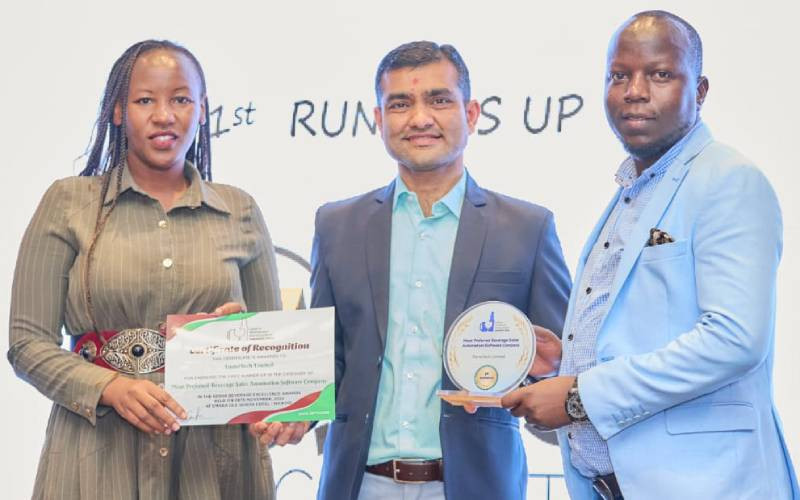By the year 2030, Kenya hopes to be an industrialising middle-income country, where citizens enjoy high quality life in a clean and safe environment. For this enviable dream to be realised, crafters of Vision 2030 put a lot of emphasis on science, technology and innovation to drive economic growth and development. Ipso facto, the role of universities and other research institutions in helping Kenya achieve this aspiration cannot be gainsaid.
Kenya is not alone in this thinking. In an increasingly knowledge-based and globalised economy, countries are racing towards utilitarian inventions; upon which industries can emerge. One of the key indicators of the amount of inventions out of any country is the number of patent filings. This heavily leans on the intensity and depth of applied research going on in relevant institutions.
While developed economies of the West, and now strongly emerging Asia, have done well in honing intellectual property based on patent filings for inventions, utility models, trademark and industrial designs; sub-Saharan Africa is yet to sniff the coffee. Statistics from the World Intellectual Property Organisation (WIPO) indicate that of the 2.6 million patent applications in 2013, Africa's best performer, South Africa, filed only 7,295 followed by Egypt at 2,057. China filed 825,136 patents while United States of America (USA) and Japan filed 571, 612 and 328, 436 patents respectively, taking the top three slots. The other countries that took top slots include Republic of Korea, Germany, Russia, India and Brazil.
In the WIPO report, Kenya only filed 241 patents, translating to 0.0093 per cent of the global pie. Rwanda had 70, Uganda 14 while Tanzania filed nothing. Thinking that the global rating was too mean, data from 2011/2012 Kenya Industrial Property Institute (KIPI) annual report indicates only 231 patents were filed in Kenya in the period under review. Surprisingly, 48 per cent of the local applications were done by other countries with France, Germany and USA, filing 27, 25, and 21 patents respectively.
In addition, out of the 66 universities in Kenya, only five filed patents with KIPI: these were Egerton (5) and Jomo Kenyatta University of Agriculture and Technology (5), Kenyatta University (4), Moi University (3) and University of Nairobi (3).
While the term knowledge-based economy continues to permeate utterances by bureaucrats and policy actors, the above statistics indicate we are not doing enough. To truly have a knowledge-driven economy, we must redefine approach to and conceptualisation of knowledge. This means creating usable knowledge that can be tapped for wealth generation; protecting such knowledge and fashioning a mechanism for technology transfer.
A good example of a government initiative that is also anchored on Vision 2030 is the actualisation of technology parks. The parks have proven effective in incubating innovation in countries like Singapore and Brazil, leading to emergence of SMEs with indispensable market value. The JKUAT-based Nairobi Industrial and Technology Park has set the pace with the roll-out of Taifa Laptop; the first computing device to be conceptualised and designed in Kenya.
We need to strengthen institutions like Kenya National Commission for Science, Technology and Innovation to continuously increase applied research funding particularly in science and technology. Equally important is to fortify KIPI and allied organs in research institutions to proactively guide our innovators towards securing their intellectual endowments, and inventions. In order to avert intellectual haemorrhage to other nations, let's create incentives to our researchers and innovators and fire their capacity to create new and useful knowledge that can translate into tangible innovations of global competitiveness.
Certainly more patent filings may not translate to economic growth and development. Other factors like availability of infrastructure, affordable and stable supply of clean energy, ability to attract foreign direct investment and external markets, supply of competent labour, ease of doing business, political stability and other panoply of factors count too.
 The Standard Group Plc is a
multi-media organization with investments in media platforms spanning newspaper
print operations, television, radio broadcasting, digital and online services. The
Standard Group is recognized as a leading multi-media house in Kenya with a key
influence in matters of national and international interest.
The Standard Group Plc is a
multi-media organization with investments in media platforms spanning newspaper
print operations, television, radio broadcasting, digital and online services. The
Standard Group is recognized as a leading multi-media house in Kenya with a key
influence in matters of national and international interest.
 The Standard Group Plc is a
multi-media organization with investments in media platforms spanning newspaper
print operations, television, radio broadcasting, digital and online services. The
Standard Group is recognized as a leading multi-media house in Kenya with a key
influence in matters of national and international interest.
The Standard Group Plc is a
multi-media organization with investments in media platforms spanning newspaper
print operations, television, radio broadcasting, digital and online services. The
Standard Group is recognized as a leading multi-media house in Kenya with a key
influence in matters of national and international interest.







